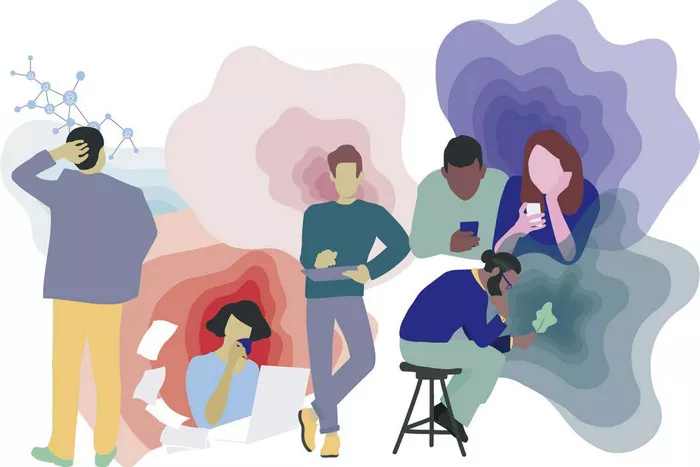Mental health disorders affect individuals of all genders, but research indicates that certain conditions may be more prevalent among males. Understanding these gender disparities is crucial for effective diagnosis, treatment, and support systems. In this comprehensive article, we delve into the various mental disorders that are more common in males, exploring their manifestations, contributing factors, and potential interventions.
1. Gender Differences in Mental Health
To comprehend why certain mental disorders are more common in males, it’s essential to acknowledge the complex interplay of biological, psychological, and social factors. Historically, societal norms and expectations have influenced how individuals, particularly males, express and seek help for mental health issues. This section will provide an overview of gender differences in mental health prevalence rates, highlighting the significance of addressing male-specific concerns.
2. Attention-Deficit/Hyperactivity Disorder (ADHD)
ADHD is a neurodevelopmental disorder characterized by inattention, hyperactivity, and impulsivity. While often diagnosed in childhood, ADHD can persist into adulthood, albeit with different symptom presentations. Research suggests that males are more likely to receive an ADHD diagnosis than females, possibly due to differences in symptom expression and diagnostic biases.
3. Autism Spectrum Disorder (ASD)
Autism spectrum disorder is a complex neurodevelopmental condition marked by challenges in social communication and repetitive behaviors. Studies consistently indicate a higher prevalence of ASD among males compared to females, with estimates suggesting a male-to-female ratio of around 4:1. Despite ongoing research efforts, the reasons for this gender disparity remain unclear.
4. Substance Use Disorders
Substance use disorders, including alcohol and drug abuse, represent a significant public health concern worldwide. While both genders are susceptible to substance misuse, males tend to have higher rates of alcohol and drug dependence. Sociocultural factors, such as societal expectations regarding masculinity and coping mechanisms, may contribute to this disparity. This section will examine the nuanced relationship between male gender norms and substance use, along with effective prevention and treatment strategies.
5. Conduct Disorder and Antisocial Personality Disorder
Conduct disorder (CD) and antisocial personality disorder (ASPD) are characterized by persistent patterns of behavior that violate societal norms and the rights of others. While both disorders can occur in females, they are more commonly diagnosed in males. Early childhood conduct problems, genetic predispositions, and environmental factors, such as exposure to violence, may heighten the risk of developing CD and ASPD in males.
6. Depression and Suicide
Depression is a leading cause of disability worldwide, affecting individuals of all genders. However, research suggests that males may be less likely to seek help for depressive symptoms and more prone to experiencing externalizing behaviors, such as aggression or substance abuse, as coping mechanisms. Consequently, undiagnosed or untreated depression in males can increase the risk of suicide.
7. Post-Traumatic Stress Disorder (PTSD)
Post-traumatic stress disorder can develop following exposure to traumatic events, such as combat, natural disasters, or interpersonal violence. While both men and women can experience PTSD, studies indicate that males are more likely to be exposed to traumatic events, particularly combat-related trauma. However, societal expectations surrounding masculinity may hinder males from seeking mental health support, leading to underreporting and inadequate treatment.
8. Seeking Help: Overcoming Barriers to Male Mental Health Services
Despite advancements in mental health awareness and services, males continue to face unique barriers when accessing care. Stigma, traditional gender roles, and perceived self-reliance can deter males from seeking help for mental health issues.
Stigma and Traditional Gender Roles: Societal expectations surrounding masculinity often discourage males from seeking help for mental health issues. Stereotypes that equate emotional vulnerability with weakness can prevent males from acknowledging their struggles and reaching out for support. To combat stigma, educational campaigns and public awareness initiatives should challenge harmful gender norms and promote the importance of seeking help as a sign of strength rather than weakness.
Perceived Self-Reliance: Many males are socialized to believe that they should handle problems independently without seeking assistance. This self-reliant attitude can deter males from seeking professional help for mental health concerns, as they may perceive it as a sign of failure or inadequacy. Psychoeducation programs that emphasize the effectiveness of professional support, alongside peer support groups and testimonies from male role models, can help normalize help-seeking behaviors and encourage males to overcome their reluctance.
9. Conclusion
In conclusion, understanding the prevalence and manifestation of mental disorders in males is essential for fostering gender-inclusive mental health support systems. By addressing the unique challenges and barriers faced by males, we can enhance early detection, intervention, and recovery outcomes. Moving forward, collaborative efforts from healthcare providers, policymakers, and communities are needed to promote holistic well-being and resilience among individuals of all genders.
[inline_related_posts title=”You Might Be Interested In” title_align=”left” style=”list” number=”6″ align=”none” ids=”4331,3345,3343″ by=”categories” orderby=”rand” order=”DESC” hide_thumb=”no” thumb_right=”no” views=”no” date=”yes” grid_columns=”2″ post_type=”” tax=””]































